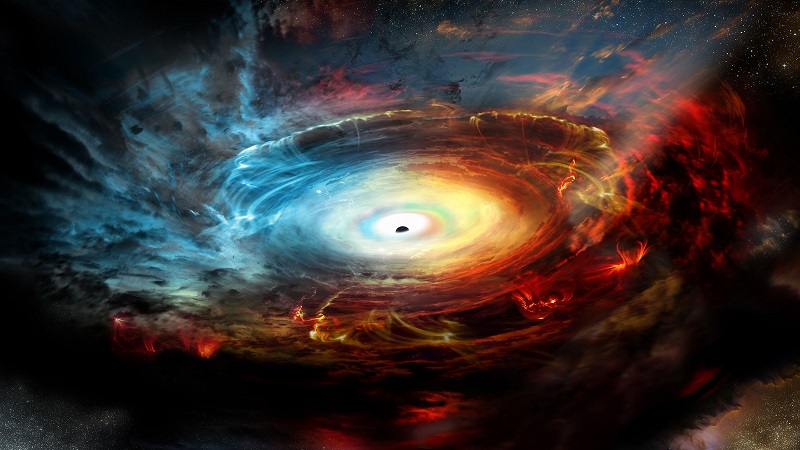There is little that astronomers have been more frustrated than black holes. There are no pictures of them; nobody has ever seen one directly. These absolutely black spots, which are even blacker than the universe itself, devour everything. Because the gravitational force of attraction is so strong that even electromagnetic waves can not escape it.
Without light, there is no picture – at least so far. That could change on Wednesday when international scientists present the first results of the Event Horizon Telescope (EHT) project.
That which surrounds black holes is what scientists call the event horizon. And this, in turn, can be observed. The trick is: not to target the black hole, but its environment. As many as six “major press conferences” worldwide are scheduled for Wednesday to present data from the event horizon telescope for the first time. It is nothing less than a review of the general theory of relativity Albert Einstein.
“More than 50 years ago, scientists say that something very bright was at the center of our galaxy,” said astrophysicist Paul McNamara of the European Space Agency (ESA). This something had enough gravitational force to make stars circle “very fast” in just about 20 years.
Astronomers suspected that these luminous points in space are actually directly related to black holes. The term was coined in the mid-1960s by US physicist John Archibald Wheeler. A band of white hot gas and plasma gives them radiance. What gets inside, goes out.
Composite of eight huge radio telescopes
“The event horizon is not a physical barrier; you can not be in it,” McNamara explains. “If you are inside, you can not escape, because it requires infinite energy. And when you’re on the other side, you can – in principle. “At the center of the black hole, its entire mass concentrates in a single point of infinite density and infinite gravitational field, a” singularity. “
The EHT is now for the first time to make the invisible visible. It is a composite of eight giant radio telescopes spread across the globe – Hawaii, Arizona, Spain, Mexico, Chile, and the South Pole. The German Max Planck Institute is also involved in the project.
In April, they were aligned with two black holes at widely spaced locations in the universe: Sagittarius A * (Sag A * for short) in the center of our galaxy, and the much larger black hole in the giant galaxy M87 (Messier 87).
Sag A * has a diameter of around 44 million kilometers. What sounds huge takes off from the earth and thus from 26,000 light years (245 trillion kilometers) distance like a golf ball on the moon.
In M87, on the other hand, a gravity monster lurks 1500 times larger, but it is far more distant; however, the size and distance balance out. Experts and betting shops tap on Sag A * as an image candidate, because of the light smog of the Milky Way on the way to M87.
Astrophysicists like McNamara are spellbound at General Theory of Relativity – does it last? Never before has she been tested in this dimension. Pioneering research on Einstein’s theory of relativity was presented as early as 2015. For the first time, researchers directly observed so-called gravitational waves, thus confirming a central component of Einstein’s theory.
The tiny waves are space-time distortions that arise in extremely high-energy events in the universe, such as explosions of giant stars or colliding black holes. Then they spread unchecked through the world at the speed of light.




